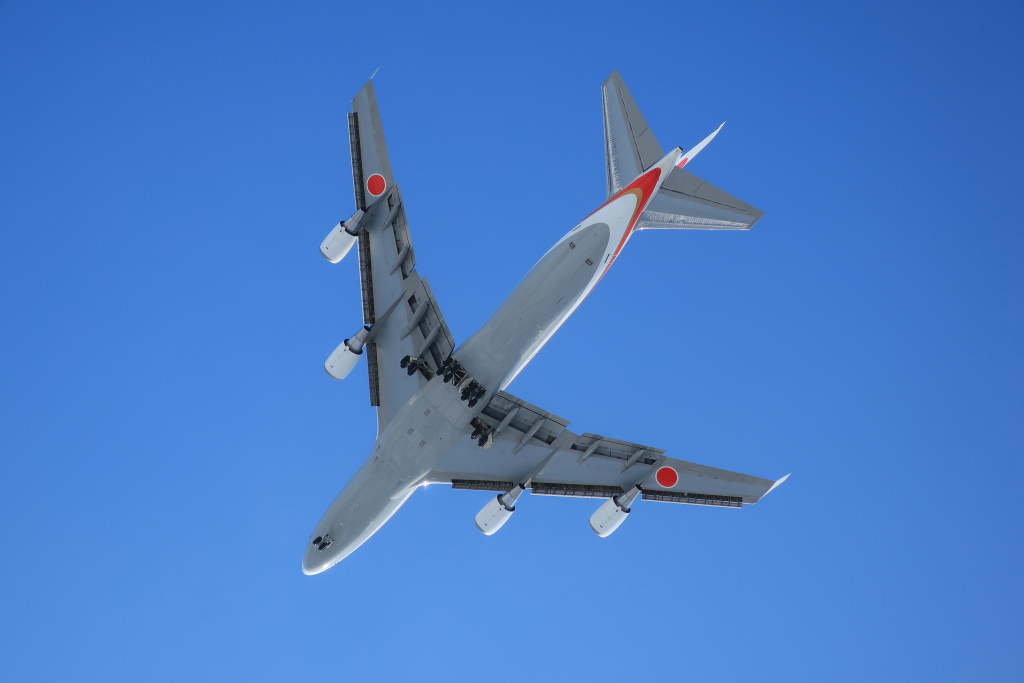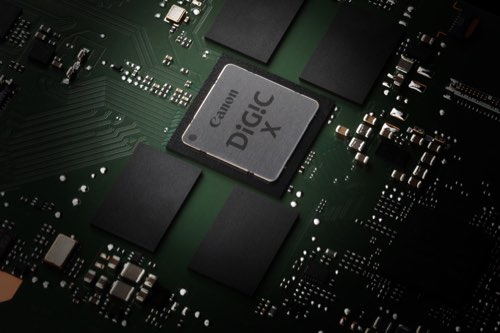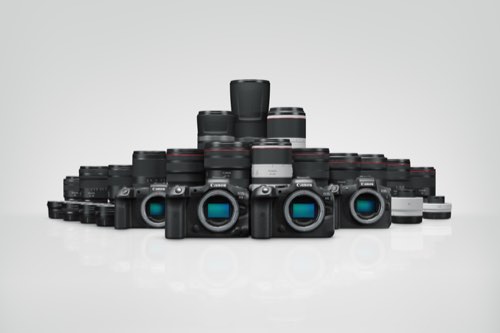The new PowerShot G9 X Mark II, just released by Canon, incorporates the DIGIC 7 image processor for enhanced image quality and features that make photographic expression more enjoyable, all while maintaining a compact body size. Let us take a look at the characteristics of the camera through some test shots. (Reported by: Kazuo Nakahara)

A more lightweight, premium compact camera featuring DIGIC 7
The PowerShot G9 X Mark II is an updated version of the PowerShot G9 X, which is the smallest member in the premium compact camera PowerShot G series. While it carries almost the same appearance and focal length range as its predecessor, it packs a punch with its smaller and lighter body weighing at 206g and its DIGIC 7 Image Processor. The PowerShot G9 X Mark II also employs a Dual Sensing IS system, which draws information not just from the gyro sensor but also the image sensor as it detects and corrects camera shake. The system offers an image stabilisation correction of 3.5 stops, an improvement of 0.5 stops from its predecessor. With improved noise reduction, it produces high image quality even at a high ISO of 3200.
Further improvements have been made to its AF functions, with precise subject tracking performance unlike those in compact digital cameras. Visual resolution is also better with less diffraction blur at small apertures. Panning shots that require advanced techniques are also made easier with the newly-introduced Panning mode, which sets an appropriate shutter speed based on real-time analysis of the image information. Also, personally, I am most delighted by the fact that the camera offers Picture Style options.

PowerShot G9 X Mark II/ FL: 10.2mm (28mm equivalent)/ SCN (f/4, 1/20 sec, EV±0)/ ISO 1600/ WB: Auto
Captured using the new Panning mode, the resulting image boasts a high level of precision, thanks to its DIGIC 7 image processor. Even inexperienced users are able to produce excellent panning shots without worrying about unwanted camera shake.
Trying out the camera, I noticed that it has a rather quick response time when shooting. Even in continuous shooting, the shutter lag time was brief, which allowed me to shoot at ease. Also worth mentioning is the camera’s new Bluetooth compatibility, which enables enhanced connectivity with smart devices. It almost seems as though all powerful EOS features have been condensed into the small, compact body of the PowerShot G9 X Mark II.

PowerShot G9 X Mark II/ FL: 10.2mm (28mm equivalent)/ Av (f/4, 1/1,000 sec, EV+0.7)/ ISO 125/ WB: Auto
I was able to create a strong impact in this shot with an emphasised perspective using the 28mm equivalent wide-angle lens. Despite having backlight, it produced a clear render without a drop in resolution.
Here are three key features of the new PowerShot G9 X Mark II.
Feature 1: DIGIC 7 boasts an excellent information analysis capability
For cameras that do not have an optical viewfinder, information obtained from the lens is processed single-handedly by the image processor, therefore, improvements in the processor relate directly to advancements in the camera. The DIGIC 7 image processor is also employed on the EOS M5. Vast improvements can be seen from its AF functions and resolution as compared to in DIGIC 6.

PowerShot G9 X Mark II/ FL: 31mm (49mm equivalent)/ Av (f/4.9, 1/1,000 sec, EV+0.7)/ ISO 125/ WB: Auto
The PowerShot G9 X Mark II offers an enhanced tracking ability. In this example, the AF frame maintained focus on the duck throughout the time it was swimming away from the camera.
Feature 2: Comes with Picture Style, an EOS camera staple
The PowerShot G9 X Mark II now comes with Picture Style, which features a total of eight options such as ‘Auto’, as well as three other user-defined styles that allow you to input your own settings. Other settings such as ‘Sharpness’ can certainly be customised as well.

As with Canon’s EOS DSLR cameras, each Picture Style mode can be customised in detail.
Feature 3: Post-editing enabled with in-camera RAW post-processing
Unlike its predecessor, the PowerShot G9 X Mark II supports in-camera RAW post-processing. By being able to adjust the image’s brightness, white balance and detailed settings in Picture Style, you can create works with the degree of versatility you would usually get from a DSLR camera. Creative filter effects can also be applied to an image after you have taken it.

You can choose to process an image as you shoot it by adjusting the camera settings, or post-process as a RAW image it after you have shot.
Photo Gallery

PowerShot G9 X Mark II/ FL: 10.2mm (28mm equivalent)/ Av (f/5.6, 1/1,000 sec, EV±0)/ ISO 125/ WB: Auto
I caught sight of a chartered government airplane in the sky when I was having a stroll near the airport, so I quickly took out the camera from my pocket. Thanks to the swift startup of the PowerShot G9 X Mark II, I was able to capture this photo opportunity.

PowerShot G9 X Mark II/ FL: 30.6mm (84mm equivalent)/ Av (f/4.9, 1/400 sec, EV+1.7)/ ISO 125/ WB: Auto
Although the image appears slightly dark with a maximum aperture of f/4.9 at the telephoto end, it is also possible to create pictures with foreground blur if you move sufficiently close to the subject. With its compact size, the camera can be used for almost any type of scene.

PowerShot G9 X Mark II/ FL: 30.6mm (84mm equivalent)/ Av (f/4.9, 1/320 sec, EV+1.7)/ ISO 125/ WB: Auto
Shot at the telephoto end from the closest focusing distance, I was able to create a creamy bokeh quality not usually associated with aperture f/4.9, or with a compact camera. The bokeh looks delicate and natural.

PowerShot G9 X Mark II/ FL: 30.6mm (84mm equivalent)/ Av (f/4.9, 1/1,250 sec, EV-0.3)/ ISO 125/ WB: Auto
For scenes where a DSLR camera would be obtrusive and possibly intimidate subjects, the compact, hand-held size of the camera allows you to take photos without drawing too much attention. This makes it especially great for people who enjoy street photography.

PowerShot G9 X Mark II/ FL: 10.2mm (28mm equivalent)/ Av (f/4, 1/640 sec, EV+0.3)/ ISO 125/ WB: Auto
I pointed the camera directly upward to capture the reflection of the Tokyo Skytree in a signboard. With a compact camera, it is a breeze to shoot from unconventional angles like this one.
SPECIFICATION
Image sensor: 1-inch high-sensitivity CMOS
Effective pixel count: approx. 20.1 megapixels
Focal length: 10.2 to 30.6mm (28 to 84mm equivalent)
Maximum aperture: f/2 to f/4.9 (no. of aperture blades: 9)
ISO speed: 125 to 12800
Shutter speed: 1/2,000 to 30 sec
Image stabiliser: Dual Sensing IS (equivalent to approx. 3.5 stops)
LCD monitor: 3-inch (approx. 1.04 million dots)
Compatible recording media: SD, SDHC and SDXC cards
Weight: approx. 206g

Size: 57.9mm x 98mm x 31.3mm
Receive the latest updates on photography news, tips and tricks by signing up with us!
About the Author
A monthly magazine that believes that enjoyment of photography will increase the more one learns about camera functions. It delivers news on the latest cameras and features and regularly introduces various photography techniques.
Published by Impress Corporation
Born in Hokkaido in 1982, Nakahara turned to photography after working at a chemical manufacturing company. He majored in photography at the Vantan Design Institute and is a lecturer for photography workshops and seminars, in addition to working in commercial photography. He is also a representative of the photography information website studio9.


































